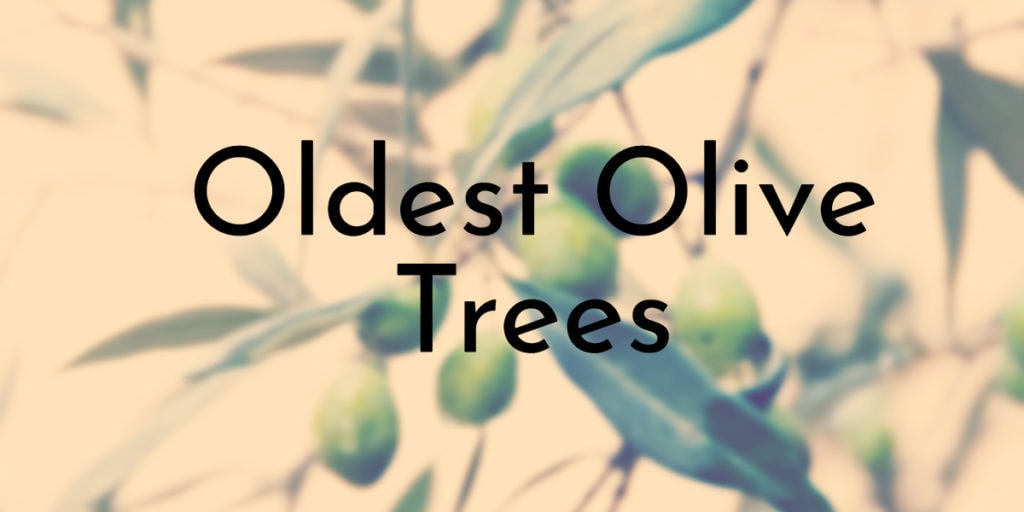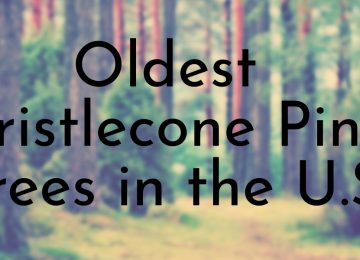Olive trees supply the world with their delicious fruit and wonderfully golden olive oil. What many people aren’t aware of is the fact that these trees are often thousands of years old. They survived the test of time and stood proud in the face of wars, plagues, and the fall of many civilizations.
For thousands of years, humanity has looked after these trees and preserved them. Some of these very old trees live to this day and continue to bear fruit, but some succumbed to their ancient age.
Would you like to know which olive trees are the oldest in history? Check out the list below!
8. Bidni Olive Trees
Estimated age: 2,000 years
Status: Alive
Location: Bidnija, Malta
Bearing fruit: Yes
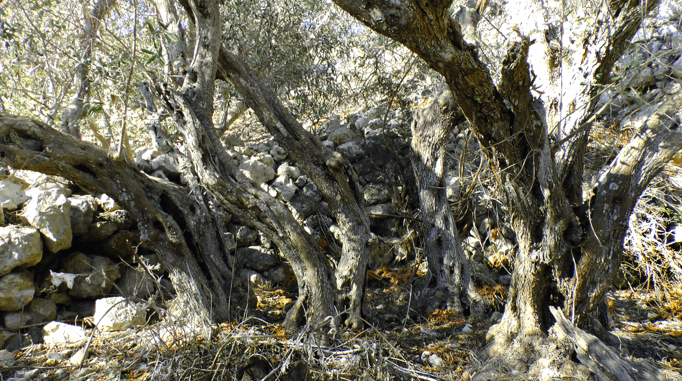
The olive trees found in Bidnija, a rural region in Northern Malta, are over 2,000 years old. These trees have been around for longer than our calendar system can cover, and it’s not just one tree — Bidnija is home to several such olive trees.
The age of the Bidni olives has been confirmed through the process of carbon dating. Many older trees are victims of inaccurate dating, but these trees are ancient, and yet still young enough to be properly dated.
Bidni olive trees are amongst UNESCO’s Database of National Heritage Laws. Since 1933, they have been protected and are not allowed to be cut down or harmed in any way.
Did you know?
Olive trees this old have seen many civilizations come and go. When it comes to Bidni trees, old tales say that they were brought to Malta by Phoenician traders. They were then planted by the locals. Many years later, their continued cultivation was done by the Romans.
7. Stara Maslina
Estimated age: over 2,000 years
Status: Alive
Location: Stari Bar, Montenegro
Bearing fruit: Yes
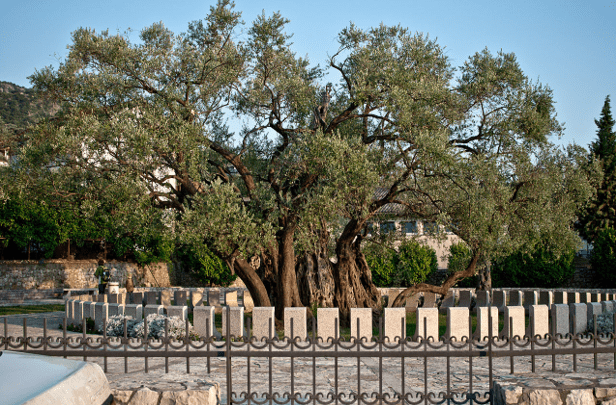
Stara Maslina is a beautiful olive tree that grows in Montenegro. It’s located near the city of Stari Bar (City of Bar). Its name means “Old Olive Tree”, and old it is! It’s estimated to have been planted over 2,000 years ago.
One side of Stara Maslina is completely burnt, but the tree continues to grow and produce olives despite that.
This tree is a popular tourist attraction in Montenegro. Thousands of tourists visit it yearly. It’s surrounded by a fence in order to protect it from being harmed further.
Did you know?
According to local tales, the burn on the side of Stara Maslina’s trunk was an unfortunate accident. It happened when a few men were playing cards right next to the tree, resting in its broad shadow. At some point, one of the men accidentally threw a match onto the tree. This set its side on fire.
6. Plato’s Sacred Olive Tree
Estimated age: 2,400-3,000 years
Status: Dead
Location: Athens, Greece
Bearing fruit: No
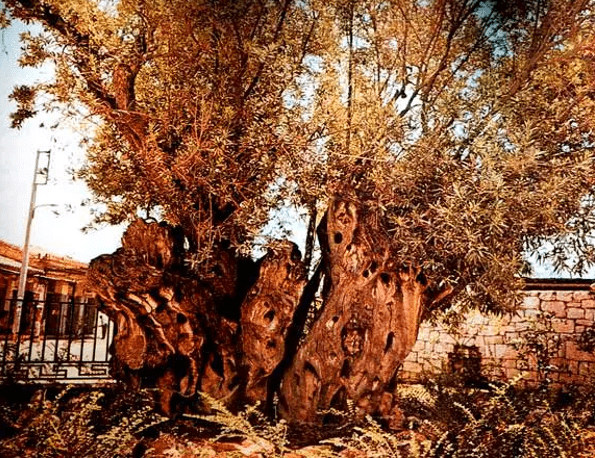
The story of Plato’s Sacred Olive tree is a sad one. It was one of the oldest olive trees on the planet. Unfortunately, it is now no more.
The massive tree was alive and well up until 1976 when a bus ran into it. The impact fractured the trunk of the tree, damaging it severely. Local scientists transferred the part that broke off to the Geoponic University of Athens, where it was kept in a case.
The remaining parts of the tree lived on and were looked after by experts. After careful treatment, the tree had taken root again, proving just how formidable nature is.
Unfortunately, it had recently been looted. The remaining part of the trunk, including roots, was discovered missing in 2013, cementing the sad fate of Plato’s Sacred Olive.
Did you know?
This tree got its name from a local legend. Apparently, this tree was the very one under which Plato taught his students. It was one of twelve olive trees that surrounded Plato’s Academy in Athens.
5. Oliveira de Mouchão
Estimated age: 3,350 years
Status: Alive
Location: Mouriscas, Abrantes, Portugal
Bearing fruit: Yes
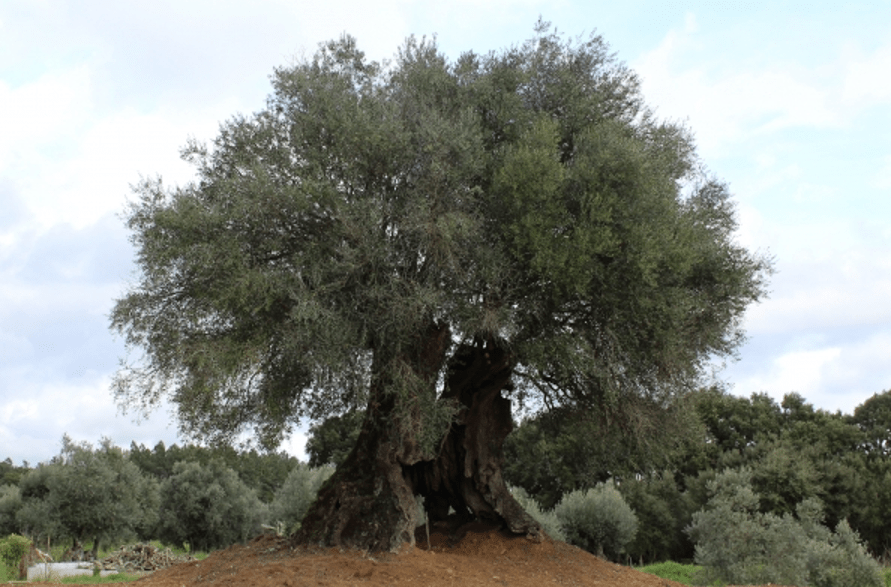
This ancient olive tree in Mouriscas, Portugal, is locally known as Oliveira de Mouchão. It’s currently one of the oldest still living olive trees in the world.
It was most likely planted at the beginning of the Atlantic Bronze Age. This means that it germinated around 1300-700 BC.
Oliveira de Mouchão continues to bear fruit on a yearly basis. It’s exceptionally tall and wide. The last official measurements were taken in 2016. At that time, the tree measured 7.80 meters in height (over 25 feet).
The girth of the tree was measured at the bottom and at 1.30 meters (4.2 feet) above ground. It measures a whopping 11.20 meters (36 feet) in ground-level girth and 6.52 meters (21 feet) in above-ground girth.
Did you know?
Being such an old tree, Oliveira de Mouchão has been dated by Portuguese scientists and is placed under special care. It was measured in 2016 by Professor Lousada of the University of Alto Douro and Trás os Montes.
As of 2007, the tree has been classified as a matter of public interest by the Portuguese state. It’s often visited by passing tourists.
4. Olivastro di Luras
Estimated age: 3,000-4,000 years
Status: Alive
Location: Luras, Sardinia, Italy
Bearing fruit: Yes
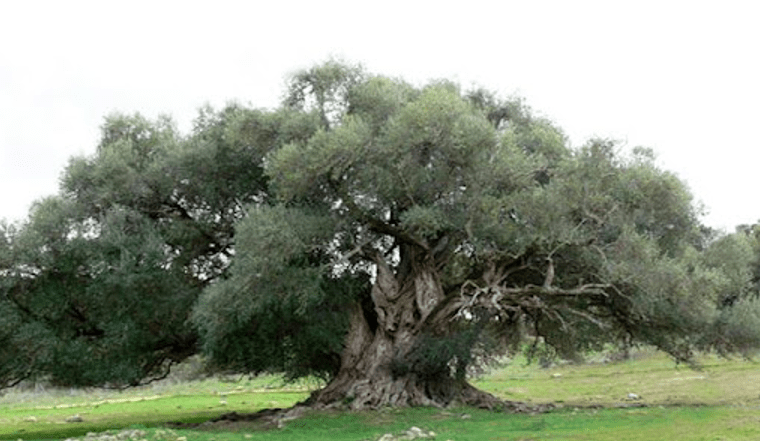
Dubbed the oldest monumental olive tree in Italy, Olivastro di Luras is an ancient tree that continues to produce olives to this day.
Like many other ancient trees, it’s almost impossible to pinpoint the exact age of Olivastro di Luras. Radioisotopes are often used to help the analysis, but the heartwood of this tree is long gone due to this age.
Dendrochronology, also known as tree ring analysis, determined this tree to be at the very least 3,000 years old — but many scientists disagree with this low estimate and claim that it’s closer to 4,000 years old.
Did you know?
Olivastro di Luras is called a monumental tree for a reason — it’s truly massive! This tree measures 11.80 meters (38 feet) in girth when measured at 1.3 meters (4 feet) above the ground. It’s also very tall with an estimated 14 meters (45 feet) in height.
3. Olive Tree of Vouves
Estimated age: 3,000-5,000 years
Status: Alive
Location: Ano Vouves, Crete, Greece
Bearing fruit: Yes
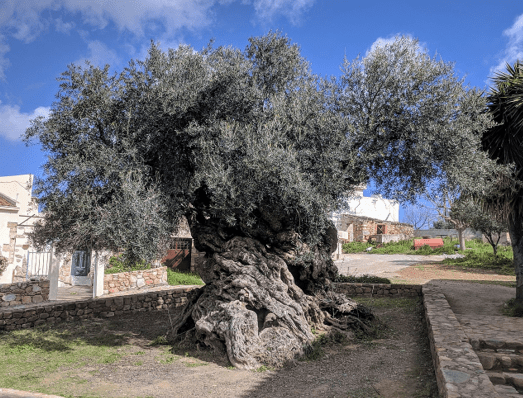
This massive olive tree is known by the name of Olive Tree of Vouves. In the midst of the beautiful Cretan surroundings, this ancient tree has likely been planted long before the birth of Jesus Christ.
Olive Tree of Vouves is a famous landmark in the area. It’s visited by over 20,000 tourists every single year. It continues to bear fruit on a yearly basis, but the olives that come from this tree are very expensive.
Experts from the University of Crete declared it to be at least 4,000 years old, with some going as high as 5,000.
Did you know?
Greece is home to many ancient trees, and a lot of them are olive trees. The same can be said about other countries located in Southern Europe.
Why are olive trees so common there, and why do they live so long? The answer lies in how strong these trees are.
Olive trees are capable of withstanding situations that destroy other trees. They can withstand drought, disease, and even fire. This allows these trees to thrive for thousands of years while the rest of the world changes around them.
2. Al-Badawi-Boom
Estimated age: 4,000-5,000 years
Status: Alive
Location: Al-Walaja, Bethlehem, Israel
Bearing fruit: Yes
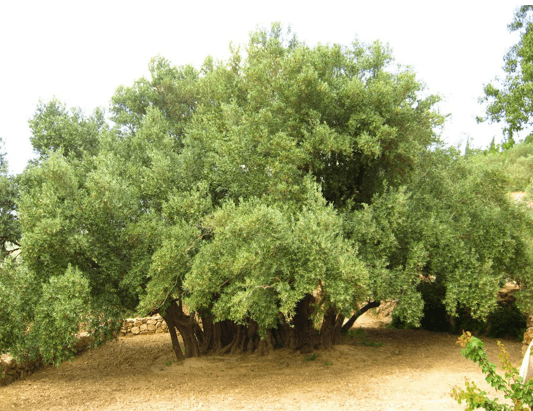
The al-Badawi Boom is one of the oldest olive trees on the planet. It’s a massive tree that grows in a region where such ancient trees are not that uncommon. In nearby cities, such as Deir Hanna and Arraba, you will be able to see other trees that are upwards of 3,000 years old.
Being such an old and majestic tree, al-Badawi has been viewed by many experts. Two teams of scientists from Japan and Europe worked to determine just how old this olive tree might be. As is often the case, it’s impossible to tell without a margin of error. However, the general consensus is that this tree might be up to 5,000 years old.
Both the al-Badawi-Boom and the trees in surrounding areas continue to produce olives. Some of these olives are then turned into high-quality oil through squeezing. This procedure is said to be more than 8,000 years old.
Did you know?
Not far from this tree is the Garden of Gethsemane in Jerusalem. This garden is filled with old trees that have seen hundreds of thousands of sunsets. Christians view the garden as the place where Jesus Christ prayed before being crucified.
1. The Sisters
Estimated age: 6,000 years
Status: Alive
Location: Bechealeh, Northern Lebanon
Bearing fruit: Yes
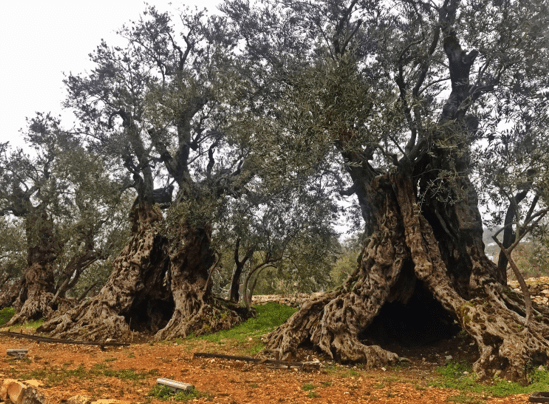
The Sisters, also referred to as the Sisters Olive Trees of Noah, are the oldest olive trees in history.
The Sisters are not just one tree. They are composed of a grove of sixteen olive trees, located in Lebanon, in a town called Bechealeh. These trees are ancient, but they continue to produce olives.
The local folklore says that these trees are anywhere between 5,000 and 6,000 years old. If proven, this might make The Sisters the oldest non-clonal living trees in the world. However, proving their exact age is more difficult than it seems.
Normally, the age of a tree can be proven with some margin of error thanks to dendrochronology. Dendrochronology inspects the tree rings within a tree’s trunk in order to estimate its’ age. However, as these trees are so old, their inner structures have deteriorated to the point where it’s impossible to accurately tell their age. On the other hand, that alone proves just how old these trees are, and scientists agree that they must be above 5,000 years old.
Did you know?
The alternate name of this grove of olive trees is not a coincidence. They are dubbed the Sisters Olive Trees of Noah because of local legends. These legends claim that the Biblical olive branch, which was returned to Noah’s Ark at the end of the Biblical Flood, came from these trees.


